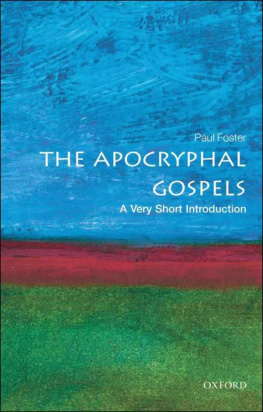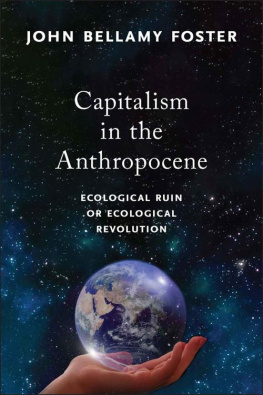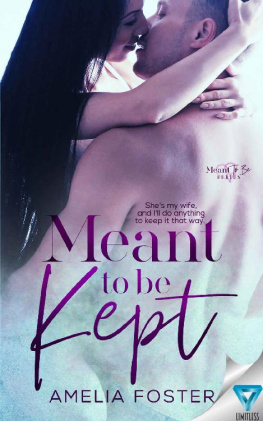Foster - Bad new days: Art, Criticism, Emergency
Here you can read online Foster - Bad new days: Art, Criticism, Emergency full text of the book (entire story) in english for free. Download pdf and epub, get meaning, cover and reviews about this ebook. year: 2015, publisher: Verso, genre: Romance novel. Description of the work, (preface) as well as reviews are available. Best literature library LitArk.com created for fans of good reading and offers a wide selection of genres:
Romance novel
Science fiction
Adventure
Detective
Science
History
Home and family
Prose
Art
Politics
Computer
Non-fiction
Religion
Business
Children
Humor
Choose a favorite category and find really read worthwhile books. Enjoy immersion in the world of imagination, feel the emotions of the characters or learn something new for yourself, make an fascinating discovery.

- Book:Bad new days: Art, Criticism, Emergency
- Author:
- Publisher:Verso
- Genre:
- Year:2015
- Rating:3 / 5
- Favourites:Add to favourites
- Your mark:
- 60
- 1
- 2
- 3
- 4
- 5
Bad new days: Art, Criticism, Emergency: summary, description and annotation
We offer to read an annotation, description, summary or preface (depends on what the author of the book "Bad new days: Art, Criticism, Emergency" wrote himself). If you haven't found the necessary information about the book — write in the comments, we will try to find it.
Foster: author's other books
Who wrote Bad new days: Art, Criticism, Emergency? Find out the surname, the name of the author of the book and a list of all author's works by series.
Bad new days: Art, Criticism, Emergency — read online for free the complete book (whole text) full work
Below is the text of the book, divided by pages. System saving the place of the last page read, allows you to conveniently read the book "Bad new days: Art, Criticism, Emergency" online for free, without having to search again every time where you left off. Put a bookmark, and you can go to the page where you finished reading at any time.
Font size:
Interval:
Bookmark:
ART, CRITICISM,
EMERGENCY
HAL FOSTER

First published by Verso Books 2015
Hal Foster 2015
All rights reserved
The moral rights of the author have been asserted
This publication is made possible in part from the Barr Ferree Foundation
Fund for Publications, Department of Art and Archaeology.
1 3 5 7 9 10 8 6 4 2
Verso
UK: 6 Meard Street, London W1F 0EG
US: 20 Jay Street, Suite 1010, Brooklyn, NY 11201
www.versobooks.com
Verso is the imprint of New Left Books
ISBN-13: 978-1-78478-145-3 (HC)
eISBN-13: 978-1-78478-146-0 (US)
eISBN-13: 978-1-78478-147-7 (UK)
British Library Cataloguing in Publication Data
A catalogue record for this book is available from the British Library
Library of Congress Cataloging-in-Publication Data
Foster, Hal, author.
Bad new days : art, criticism, emergency / Hal Foster.
pages cm
Includes index.
ISBN 978-1-78478-145-3 (hardback) ISBN 978-1
78478-146-0 ISBN 978-1-78478-147-7
1. Art and societyHistory20th century. 2. Art and society
History21st century. 3. ArtPolitical aspectsHistory20th
century. 4. ArtPolitical aspectsHistory21st century. I. Title.
N72.S6F665 2015
701.030904dc23
2015015515
Typeset in Sabon by Hewer Text UK Ltd, Edinburgh, Scotland
Printed in the US by Maple Press
Contemporary art is so vast, so diverse, and, yes, so present as to frustrate any historical overview, and none is offered here. However, a story can be told about some art of the past twenty-five years, coherent notions do exist for this work, and it remains one task of criticism to articulate such terms as best it can. Part of the story told in this brief book turns on a recent move away from the primary assumptions of postmodernist art, in particular away from its privileging of the imagistic and the textual and toward a probing of the real and the historical. This shift was driven by motives intrinsic to art, to be sure, but it also speaks to conditions extrinsic to it, often extreme ones: hence the appearance of emergency in my subtitle.
I speak of terms because the ones taken up hereabject, archival, mimetic, precarious, and post-criticaldo not qualify as paradigms; some are closer to strategies and others to predicaments. It sounds only fair to assume that artists can choose freely art from a repertoire of subjects, themes, and forms, and that as a consequence all work is equal in interest or importance. To me that freedom is more like whateverness, and that equality is more like indifference; in any case I do not go in for them here.
In , I push back on recent rejections of the critical within the art world and beyond. Finally, a coda reflects on the implications of the current concern with performative and participatory modes of art. If my five terms signal any general turn, it is onefor good and for badaway from the critique of representation that preoccupied a previous generation of postmodernist artists and critics.
It is in the character of the critic, Leo Steinberg once remarked, to say no more in his best moments than what everyone in the following season repeats; he is the generator of the clich.guilty. What I lose in descriptive range I hope to make up in conceptual understanding.
The period of this book, the past twenty-five years, lies on the threshold of history: although not all of the art at issue here is contemporary, it is certainly not a thing of the past in the Hegelian sense. It is too early to historicize this art, but perhaps not too early to theorize it. My project, then, is a provisional attempt to come to terms with some of this work: not to apply theory, much less to impose it, but to extract some concepts embedded in some practices, and when appropriate to point to parallels in other disciplines along the way.
I do not weigh in on current debates about the contemporary as a field of its own. Elsewhere I have suggested that contemporary art has, again for good and for bad, floated free not only of modernist models but also of postwar precedents; certainly a division, set variously circa 1960, 1980, or even 1989, has become standard in the academy. One surprise for me is that this book points to connections that bridge these gaps: at moments in Abject I look back to Surrealism, in Archival I call up both prewar and postwar projects involving albums and atlases, in Mimetic I refer to postures and personae in Dada, and so on. In my account, then, art remains at least semi-autonomous in its interrelationships, but then this is also an effect of criticism that aims to be mindful of history and vice versa.
That said, my subject here is post-1989 art. After the events of 1989, especially the fall of the Berlin Wall and the uprising at Tiananmen Square, there was some optimism about the possibility of both a new Europe and a new world order different from the ones conjured by the Bushes and the Clintons; there was also a boom in architectural projects and art markets. Yet this was mostly the result of financial deregulation, and, in retrospect, 1989 represents the full dominance of neoliberalism more than anything else, which is to say an assault on the modern social contract, with welfare slashed, unions attacked, health care gutted, income inequality promoted, and so on. Disrupted by speculation and ravaged by AIDS, much of the art world did not fall for the early blandishments of neoliberalism. Indeed, some art of this period played back this assault in critical registers, and this is one focus of my attention here. Of course, after 9/11 conditions became even more extreme, as emergency did prove to be more the norm than the exception. The artistic response to this situation is another point of emphasis of this book.
Paradoxically perhaps, this is why I keep faith with the old idea of an avant-garde, a position that requires some explaining. Typically, the avant-garde is defined in two ways onlyas vanguard, in a position of radical innovation, or as resistant, in a position of stern refusal to the status quo. Typically, too, the avant-garde is understood to be driven by two motives alone: the transgression of a given symbolic order (as with Surrealism) or the legislation of a new one (as with Russian Constructivism). However, the avant-garde that interests me here is neither avant nor rear in these senses; rather, it is immanent in a caustic way. Far from heroic, it does not pretend that it can break absolutely with the old order or found a new one; instead it seeks to trace fractures that already exist within the given order, to pressure them further, even to activate them somehow. Far from defunct, this avant-garde is alive and well today.
Once again I thank family and friends for putting up with me, editors and publishers at Verso, October, Artforum, and the London Review of Books for supporting me, and colleagues and students at Princeton for stimulating me. I am especially grateful to those people who, as creative as they are committed, have reinvented a downtown New York for our time, bringing us the alternative spaces that continue to make the city a special place for innovative art and independent thought: Artists Space, Cabinet Magazine, Dia Art Foundation, Issue Project Room, the Kitchen, Light Industry, n+1, the New Museum, Storefront for Art and Architecture, Triple Canopy, the Whitney Museum Independent Study Program, White Columns, and there are many more. I am also thankful to the Cullman Center for Scholars and Writers at the New York Public Library for providing me with a haven in midtown.
Font size:
Interval:
Bookmark:
Similar books «Bad new days: Art, Criticism, Emergency»
Look at similar books to Bad new days: Art, Criticism, Emergency. We have selected literature similar in name and meaning in the hope of providing readers with more options to find new, interesting, not yet read works.
Discussion, reviews of the book Bad new days: Art, Criticism, Emergency and just readers' own opinions. Leave your comments, write what you think about the work, its meaning or the main characters. Specify what exactly you liked and what you didn't like, and why you think so.















